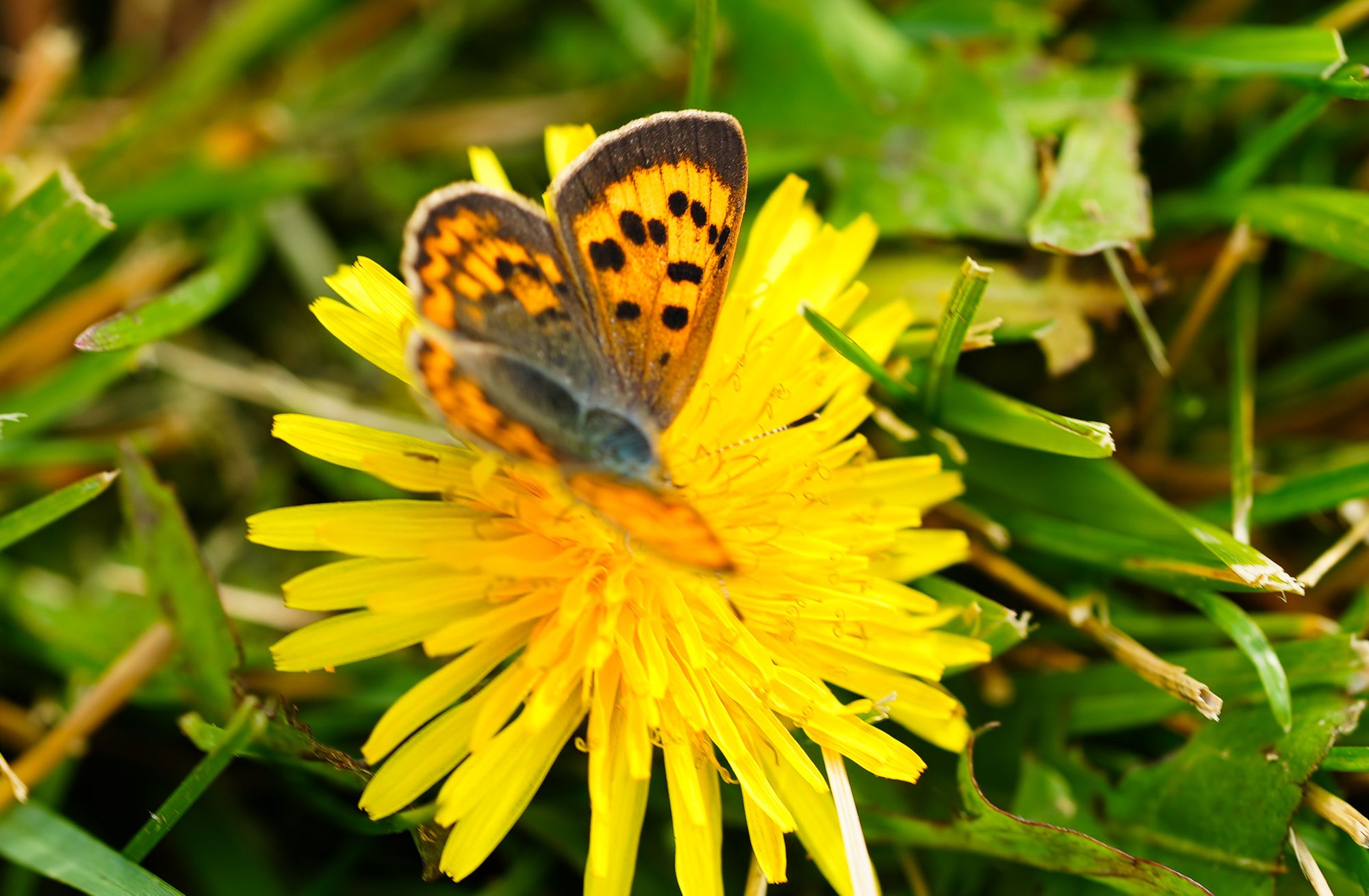October 8-14, 2023
Slow and muted
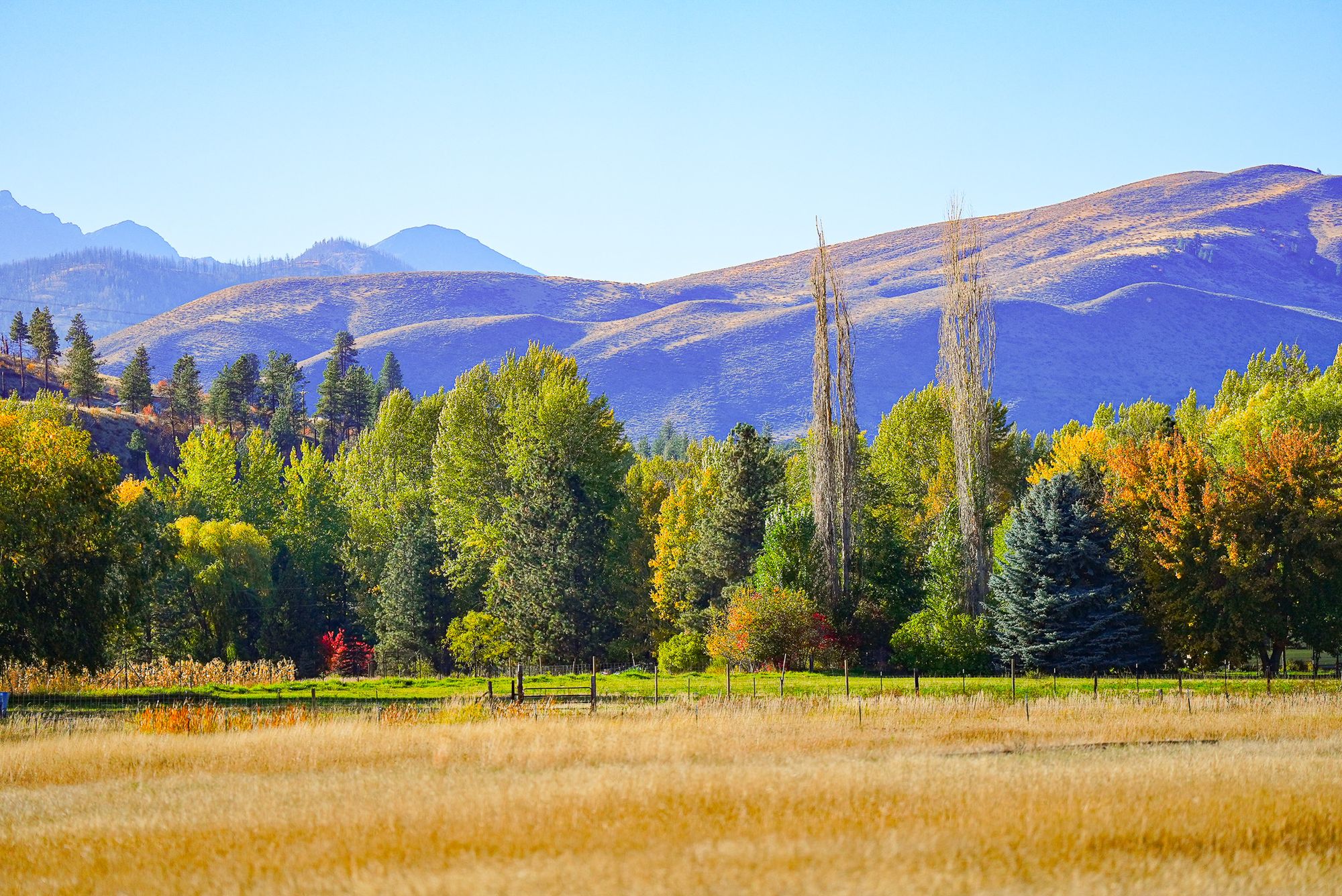
It's been a muted week at the tail end of autumn with flashes of lingering color popping out on sunny days.
Week in Review
What a quirky week this has been. On sunny days you realize how many fall colors there still are, but on gray, cloudy days it feels like everything is waiting for winter with bated breath.
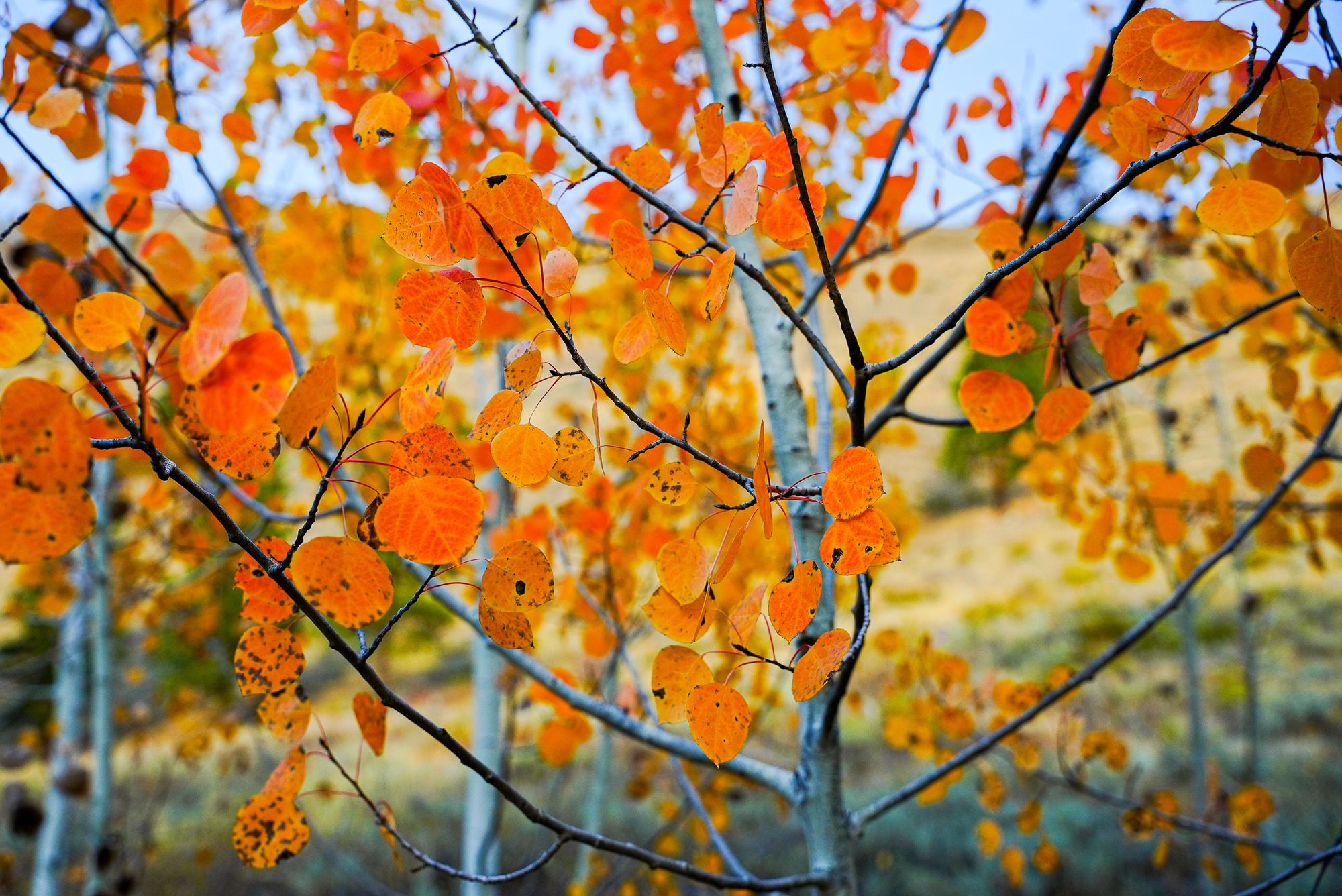
You might have to look harder now, but there are still bits of activity.
One fantastic sighting this week was a bizarre insect called a walkingstick. There is a lot to say about this close relative of the praying mantis. For example, some species reproduce asexually, while other species will copulate continuously for weeks, and their eggs look like seeds that ants collect so ants carry them into the safety of their nests. Even more fascinating, this insect was first discovered in Washington and reported in a book published in 2018!
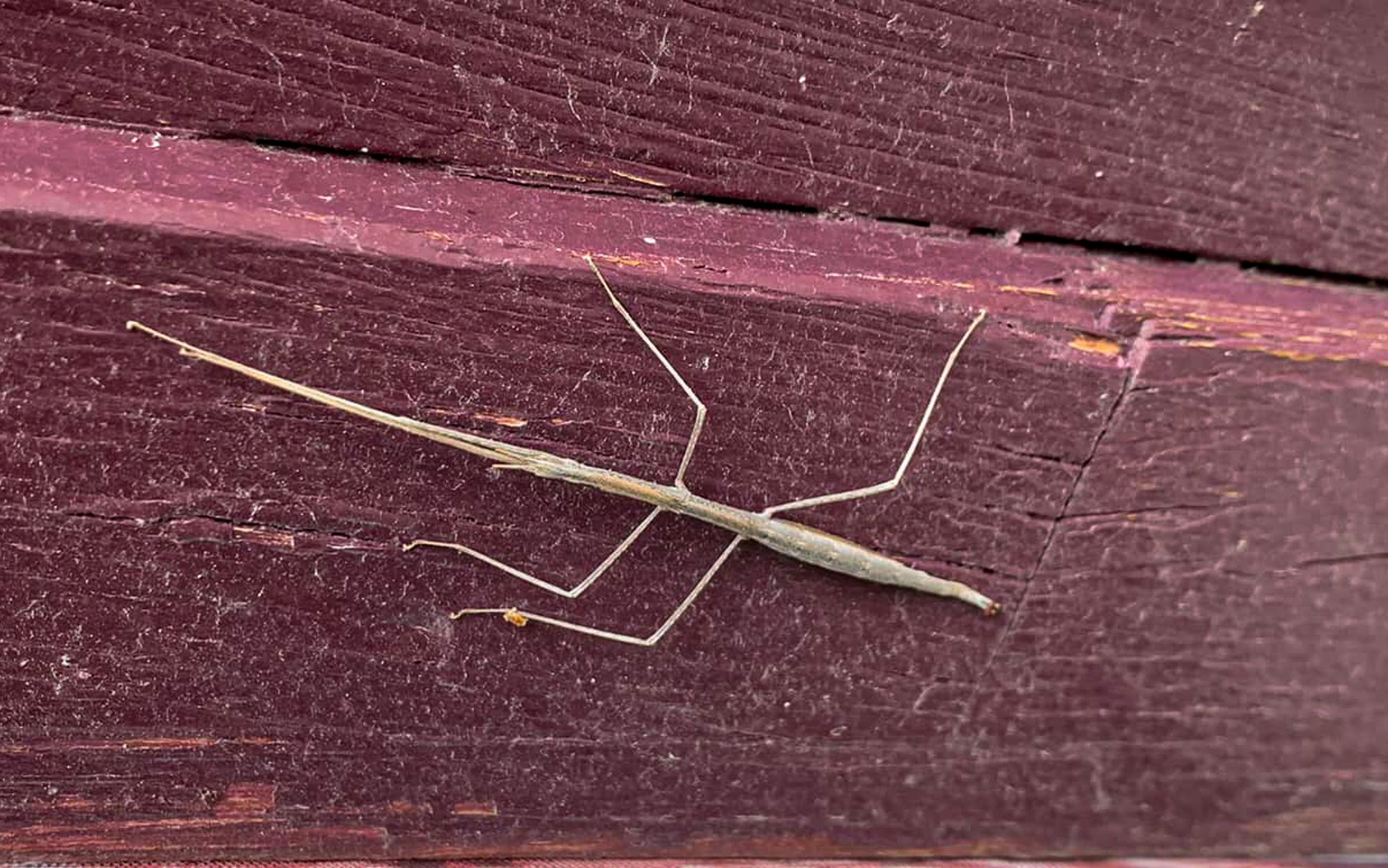
Birds have been noticeably quiet lately. At the beginning of the week, I spotted a common loon on Big Twin Lake, and my first merlin of the year. Though relatively rare in the Methow Valley, common loons begin migrating south through central Washington in early to mid-September and reach their peak numbers in mid-October.
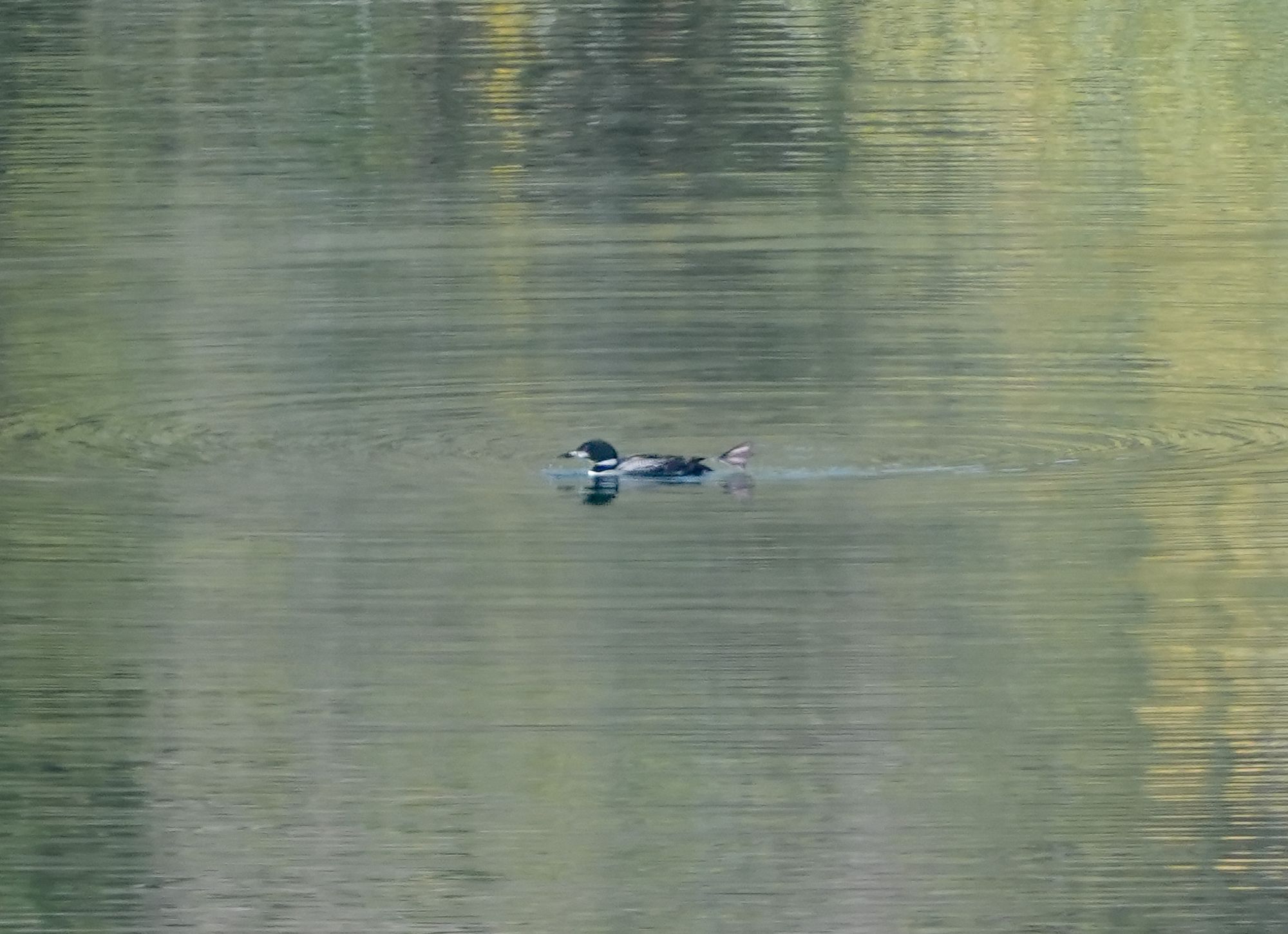
Merlins are almost exclusively a passing migrant or winter visitor in the Methow Valley, mostly arriving from the north (they may occasionally nest at higher elevations in the North Cascades). These hyper-vigilant, extremely fast fliers specialize in hunting shorebirds, but I think the one I saw at Big Twin Lake was eating dragonflies.
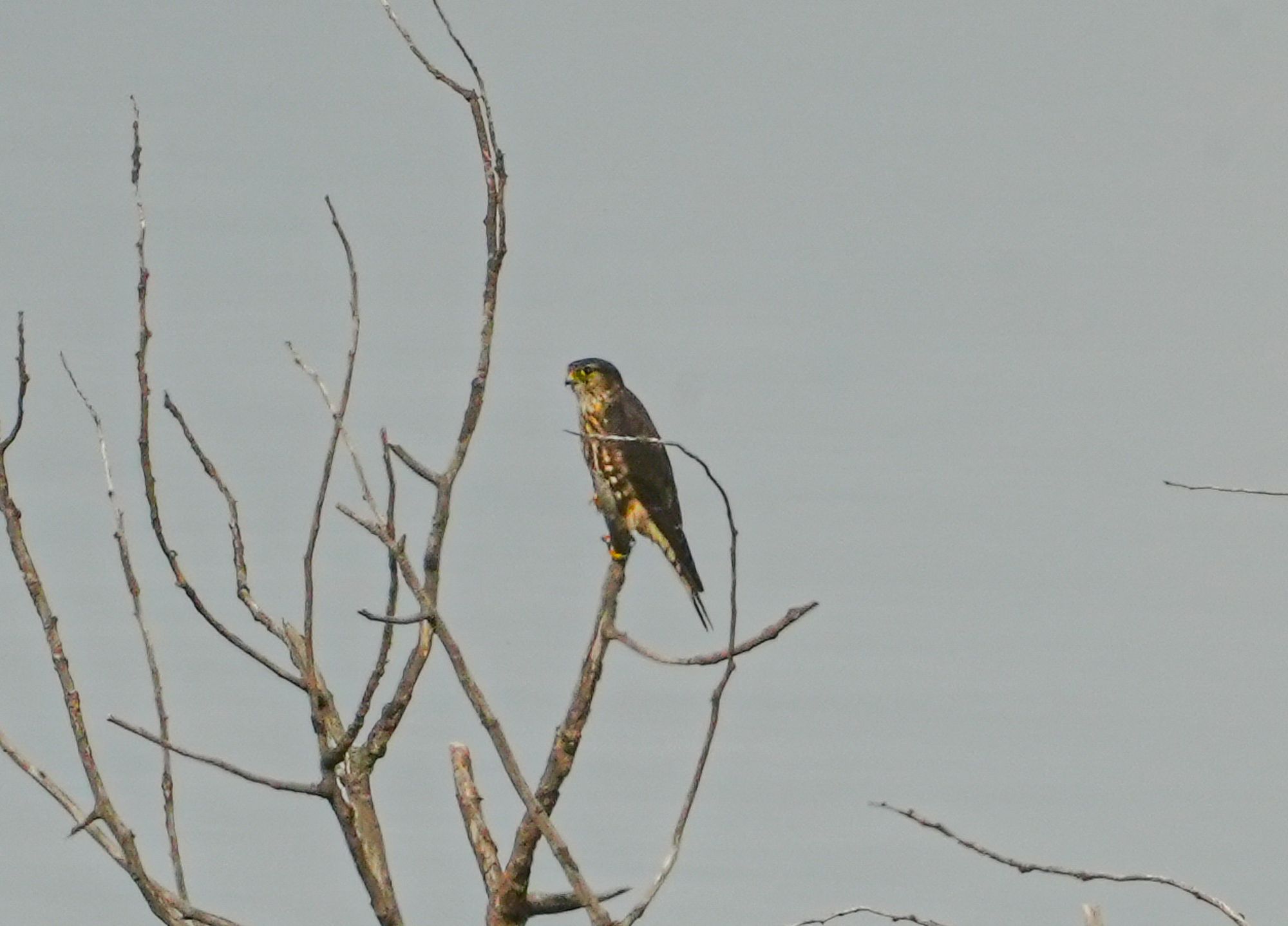
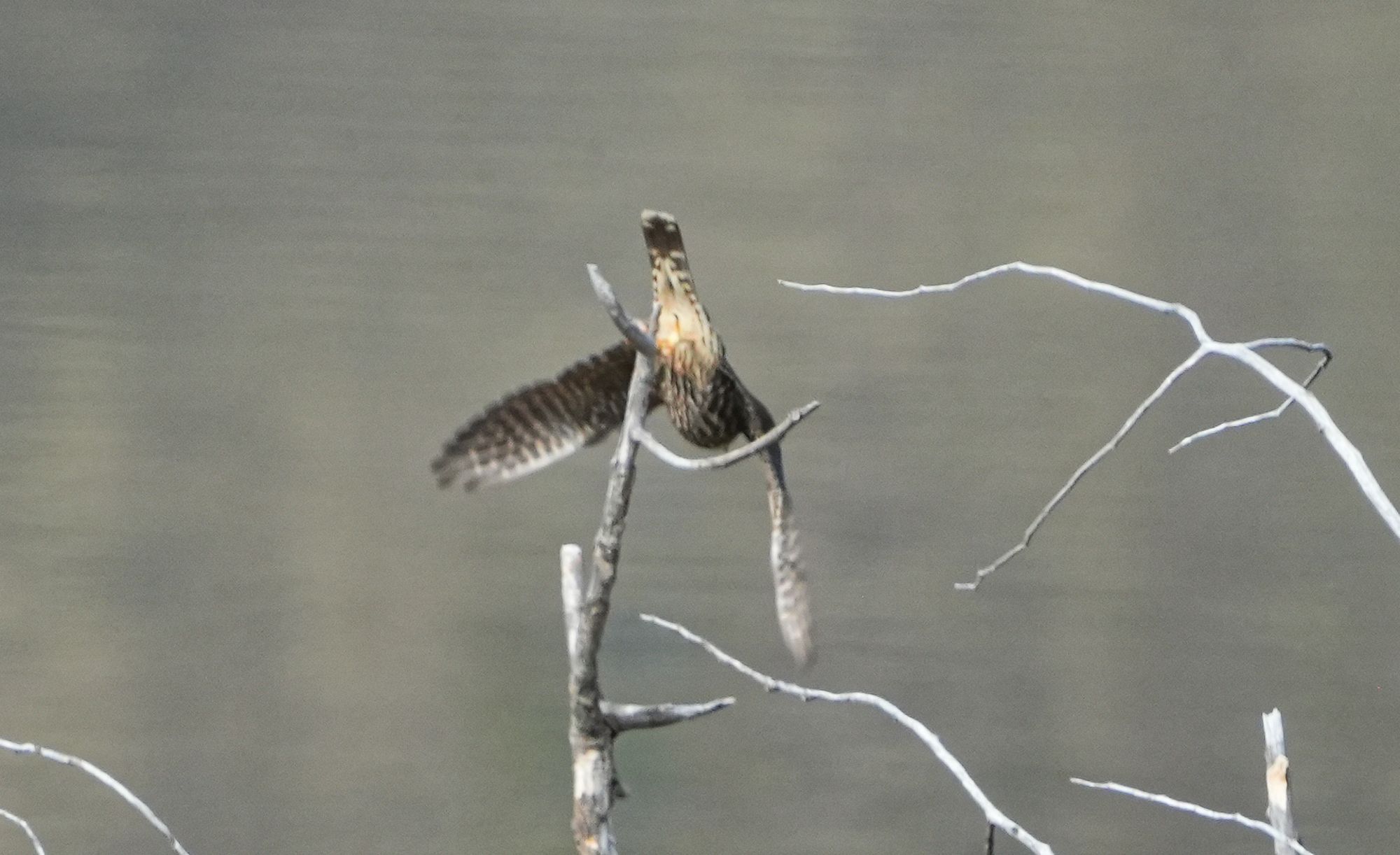
Two views of a merlin at Big Twin Lake on October 9th. Photo by David Lukas
On October 9th, I also encountered a large, mixed flock of dark-eyed juncos, white-breasted nuthatches, red-breasted nuthatches, and pygmy nuthatches; which indicates at least some kind of movement happening with our small birds.
Included in this group were numerous yellow-rumped warblers who were feasting on the white woolly aphids I described in last week's newsletter. If you remember, these aphids protect themselves by secreting strands of white wax. Wax is very difficult to digest and our insect-eating birds cannot digest wax. One notable exception is yellow-rumped warblers, and their ability to digest wax is what allows them to linger through the fall (and rarely into the winter) while other insect-eating birds are forced to fly south.
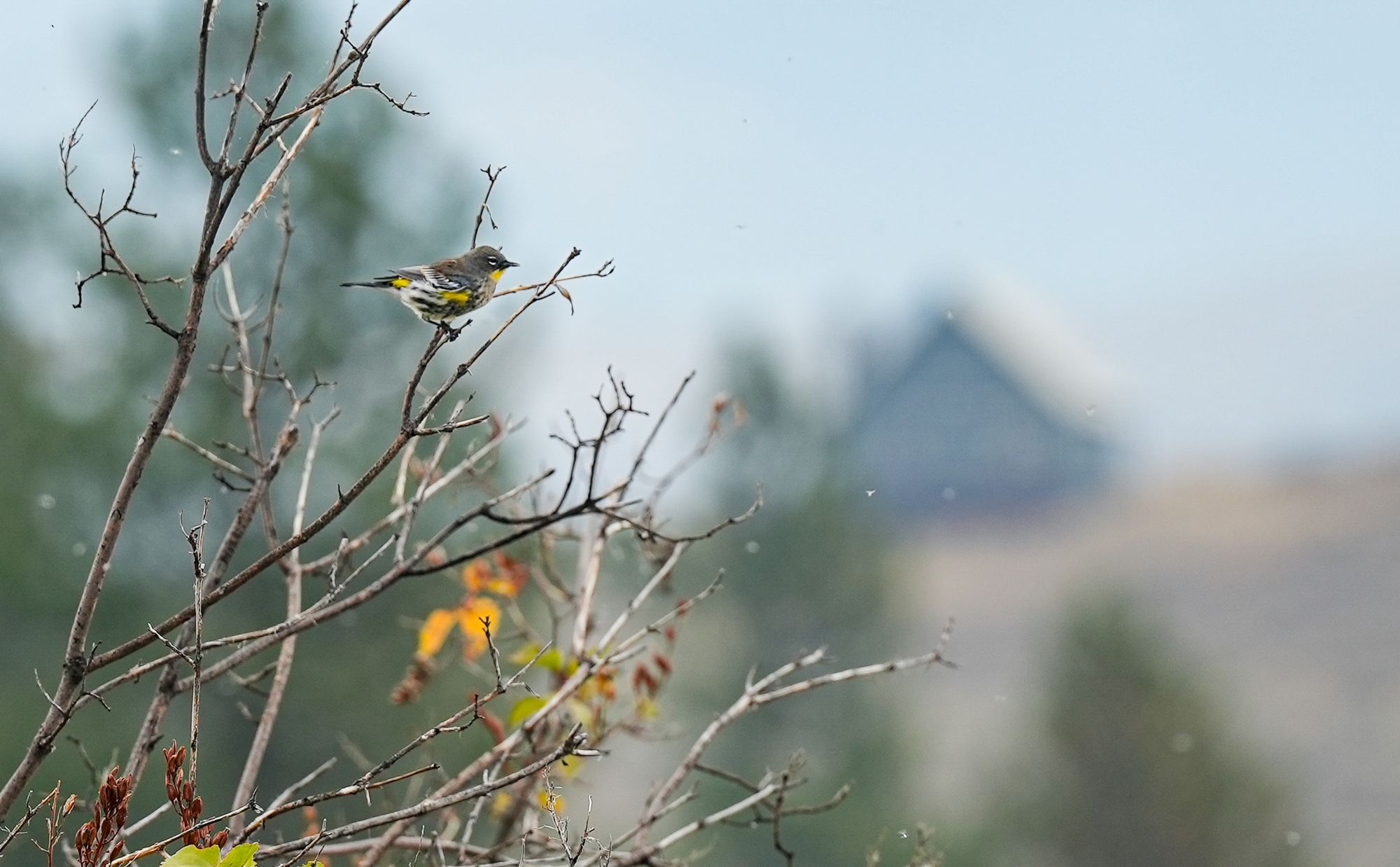
You don't expect to see reptiles this late in the year, but a rattlesnake was reported at Pipestone Canyon on October 9th. At least a few are still active on warm days, so keep your eyes open.
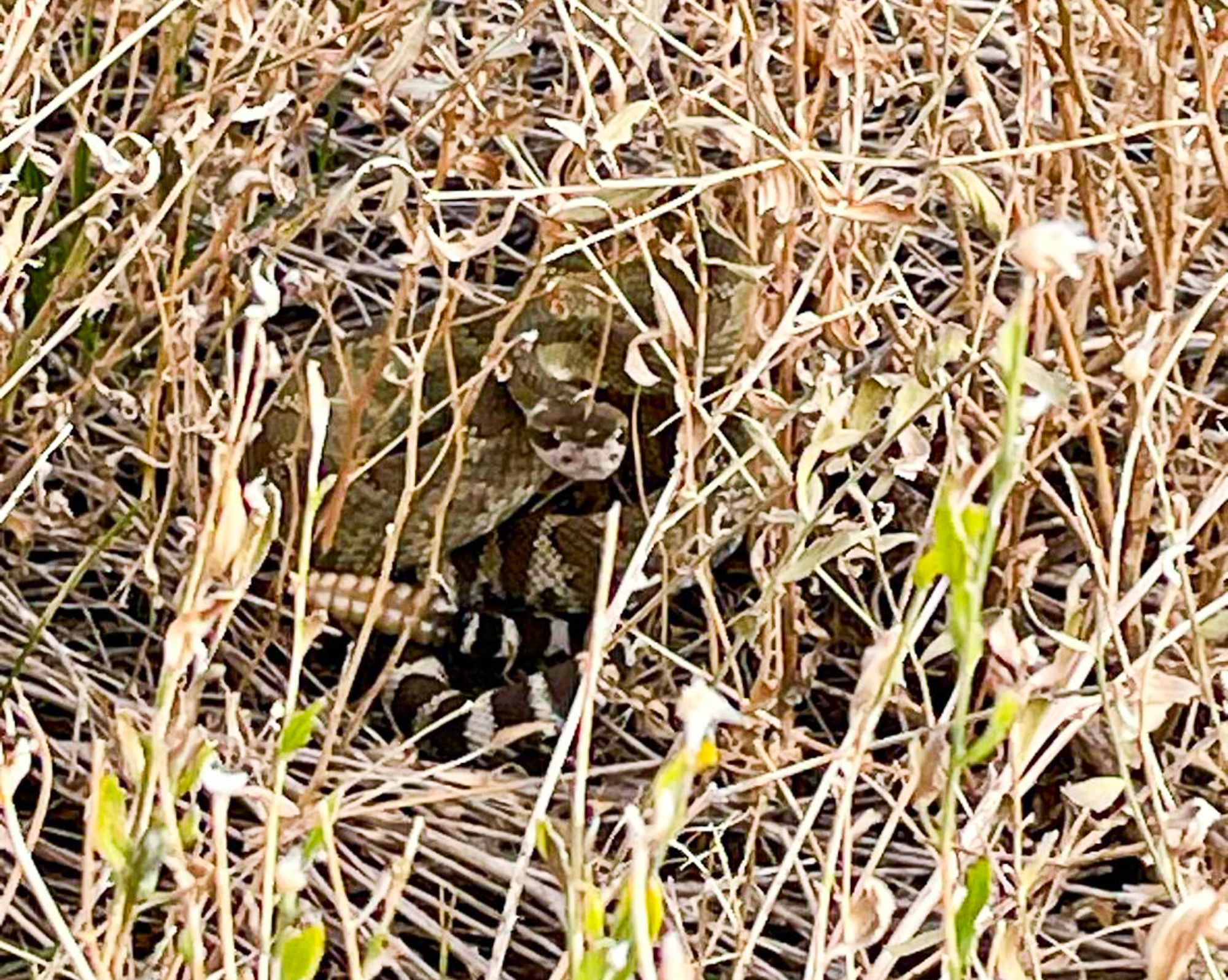
You're far more likely to spot mushrooms these days, and several beautiful mushrooms were reported this week. It would be fun to learn more about our local mushrooms, but I can't pretend that I know how to identify these mushrooms.
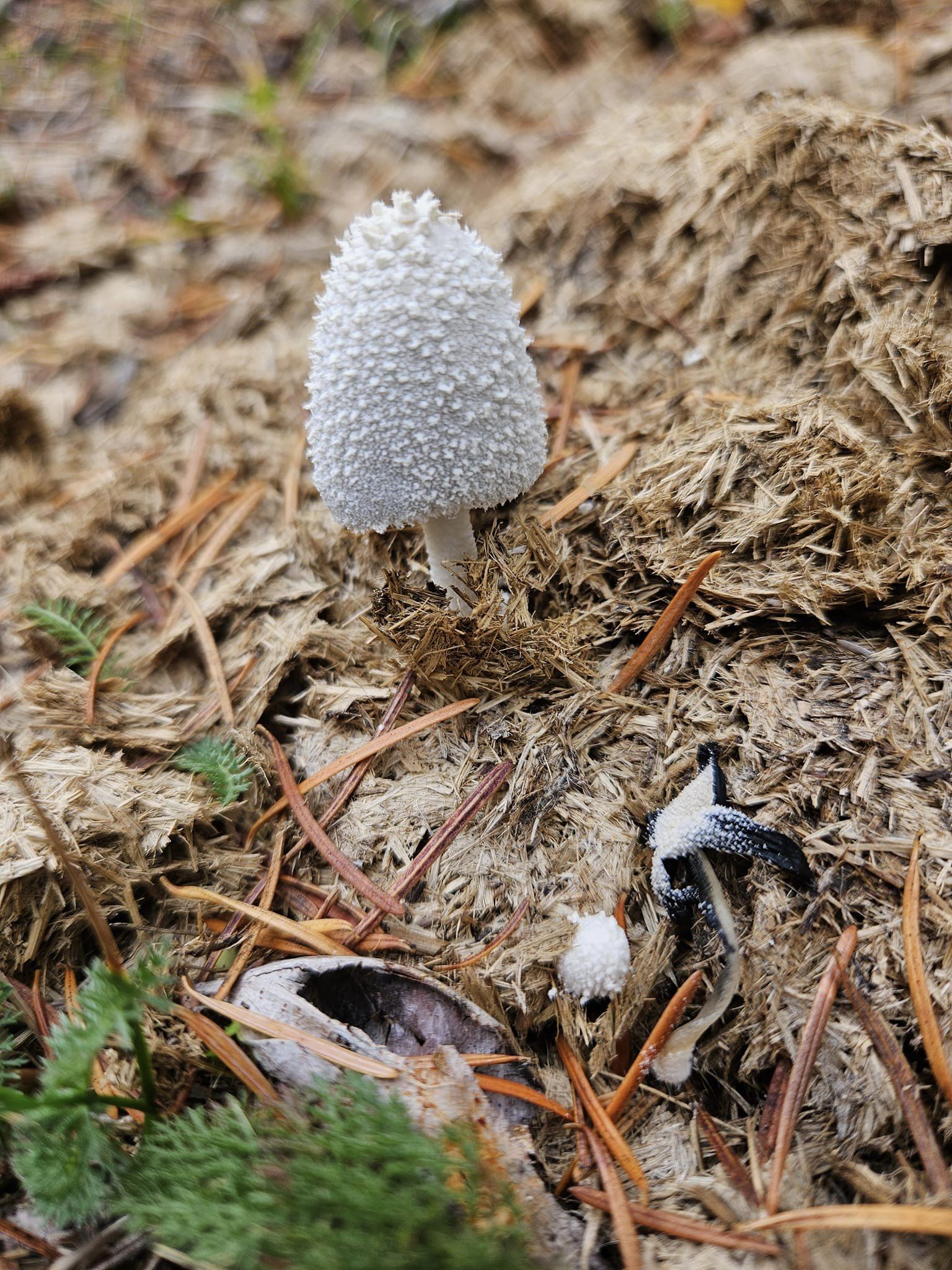
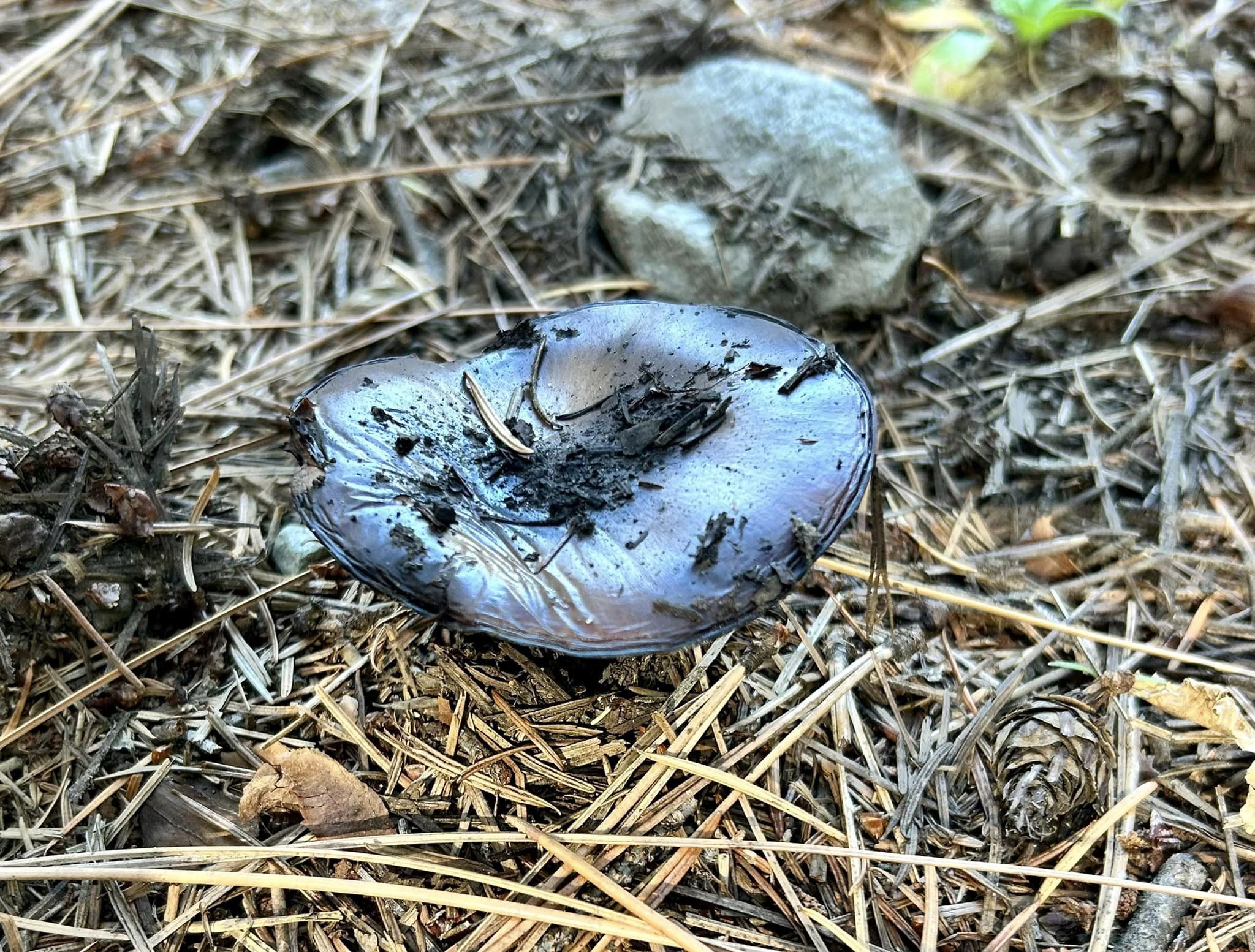
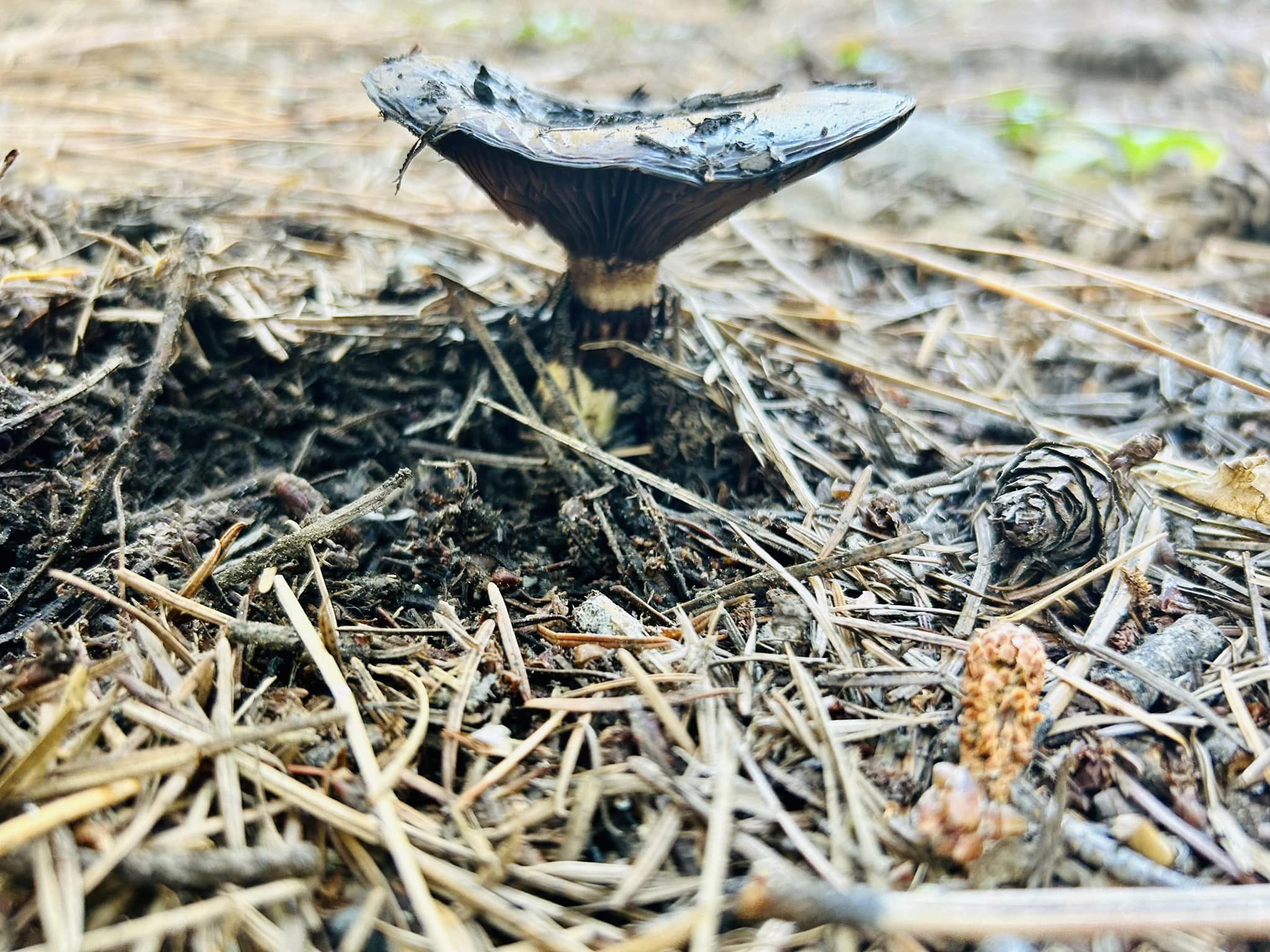
Mushroom on the left might be a Coprinopsis nivea (photo by Nancy LaRiviere Aadland), while the two on the right generated a lot of discussion on Facebook (photos by Pamela J. Floyd)
Observation of the Week: A Dandelion Mecca
This morning I was standing in the yard pondering this week's newsletter and thinking about how there isn't much to see or report at this time of year.
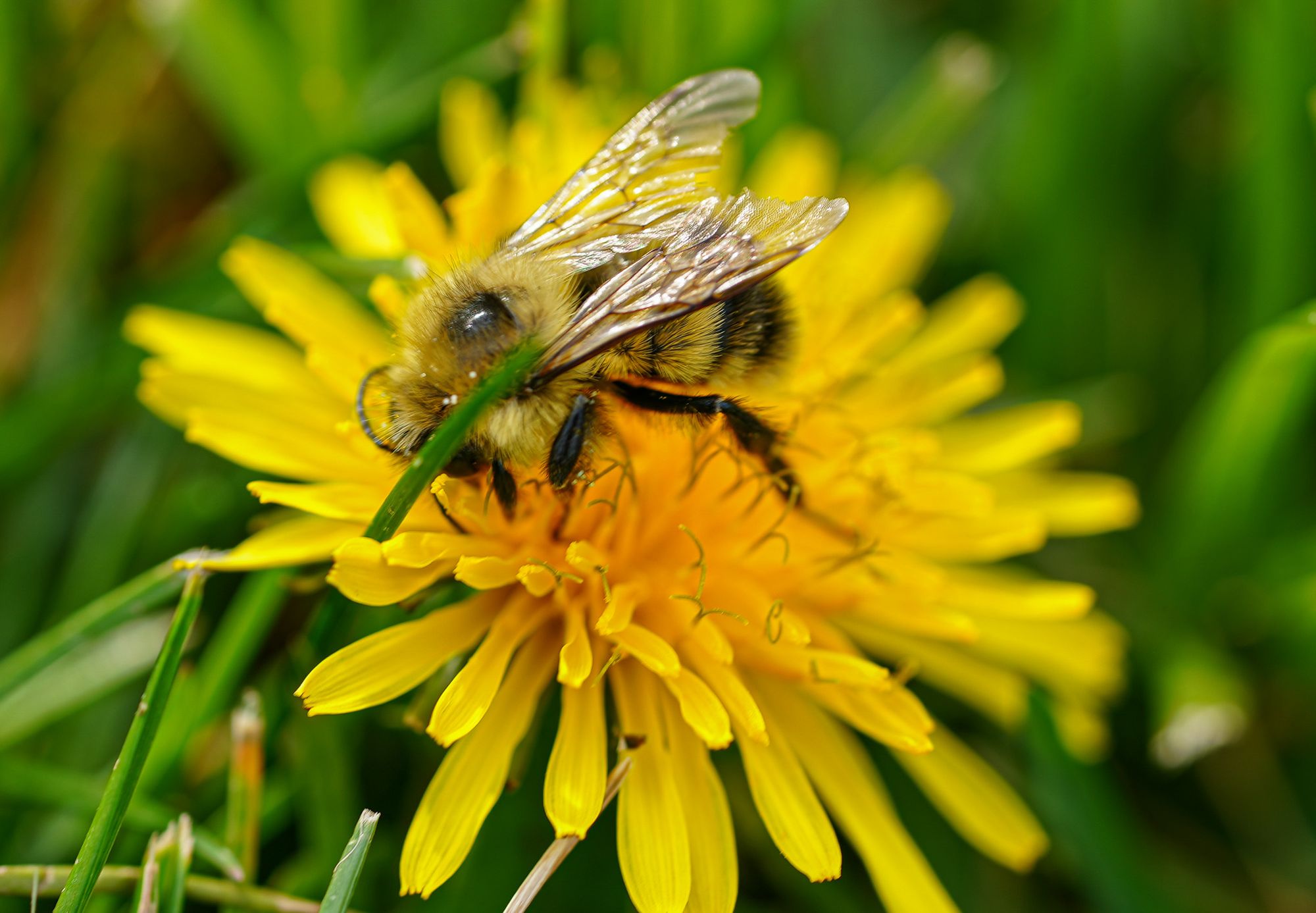
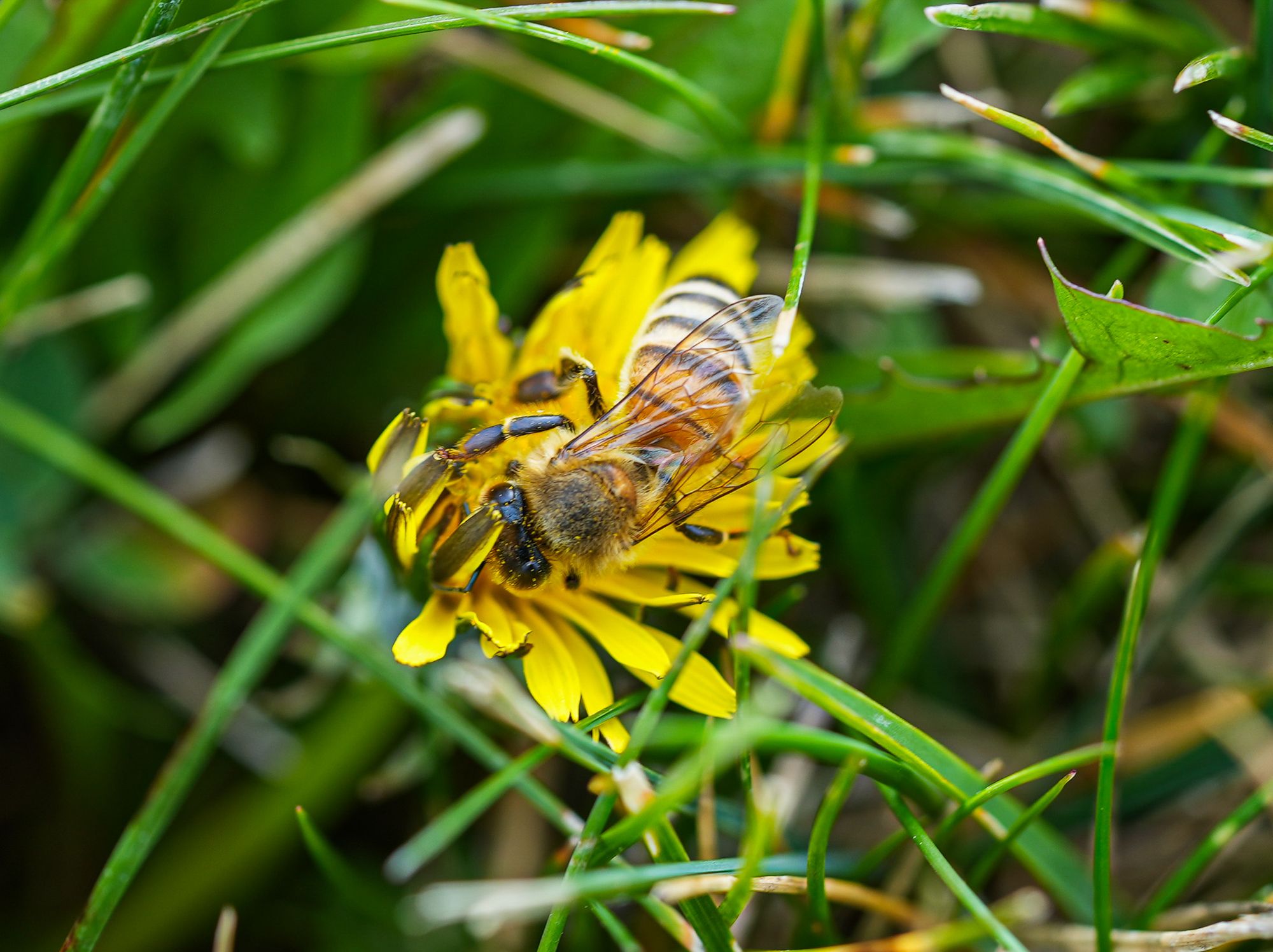
Bumblebee and honeybee. Photos by David Lukas
Then—as I was standing there, feeling like I had nothing to offer this week—I looked around and noticed that the handful of dandelions in my yard were brimming over with insects!

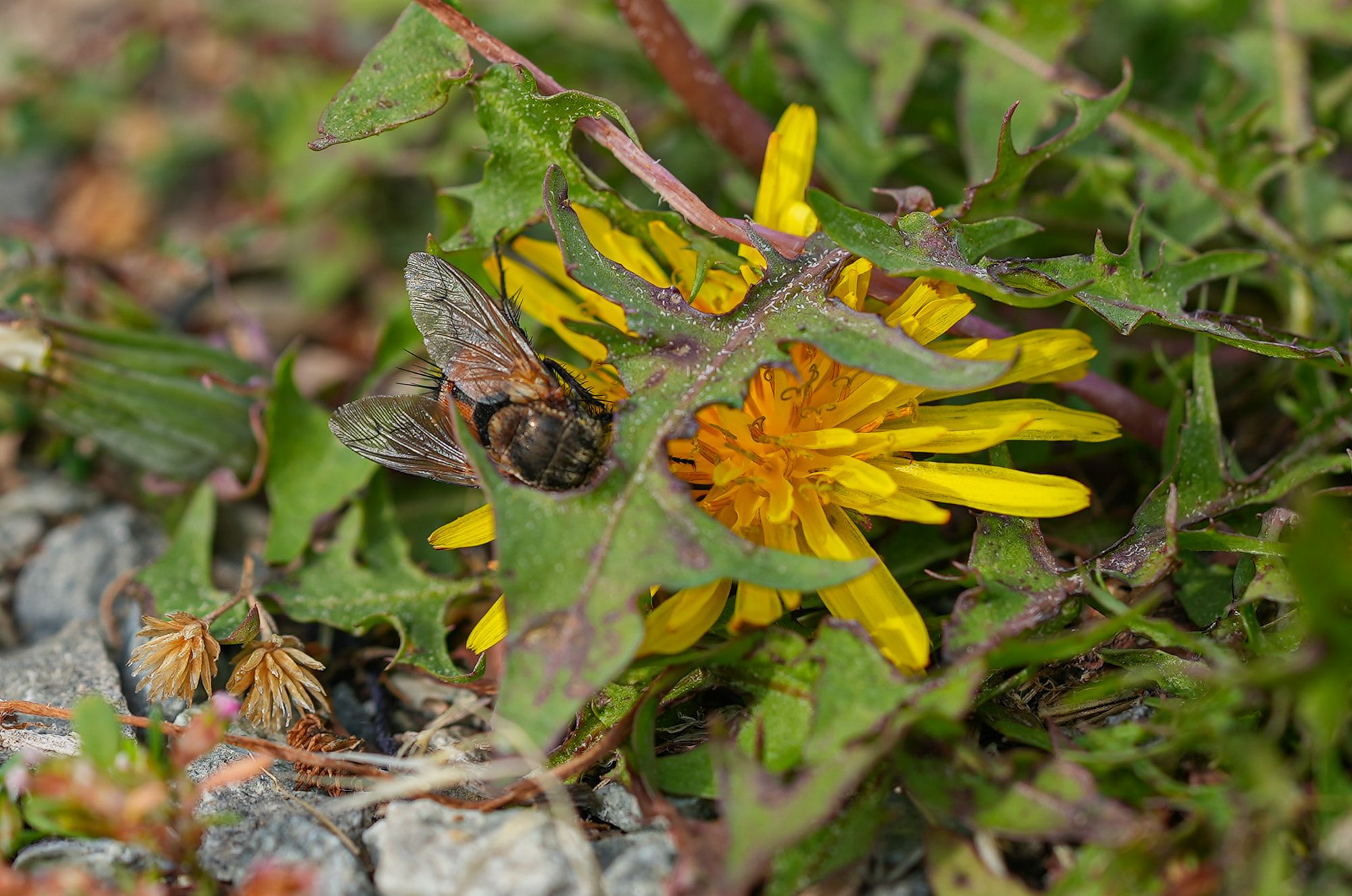
Two types of native flies. Photos by David Lukas
Right at my feet was a world of activity! And isn't it true that we easily miss what's going on in front of us!
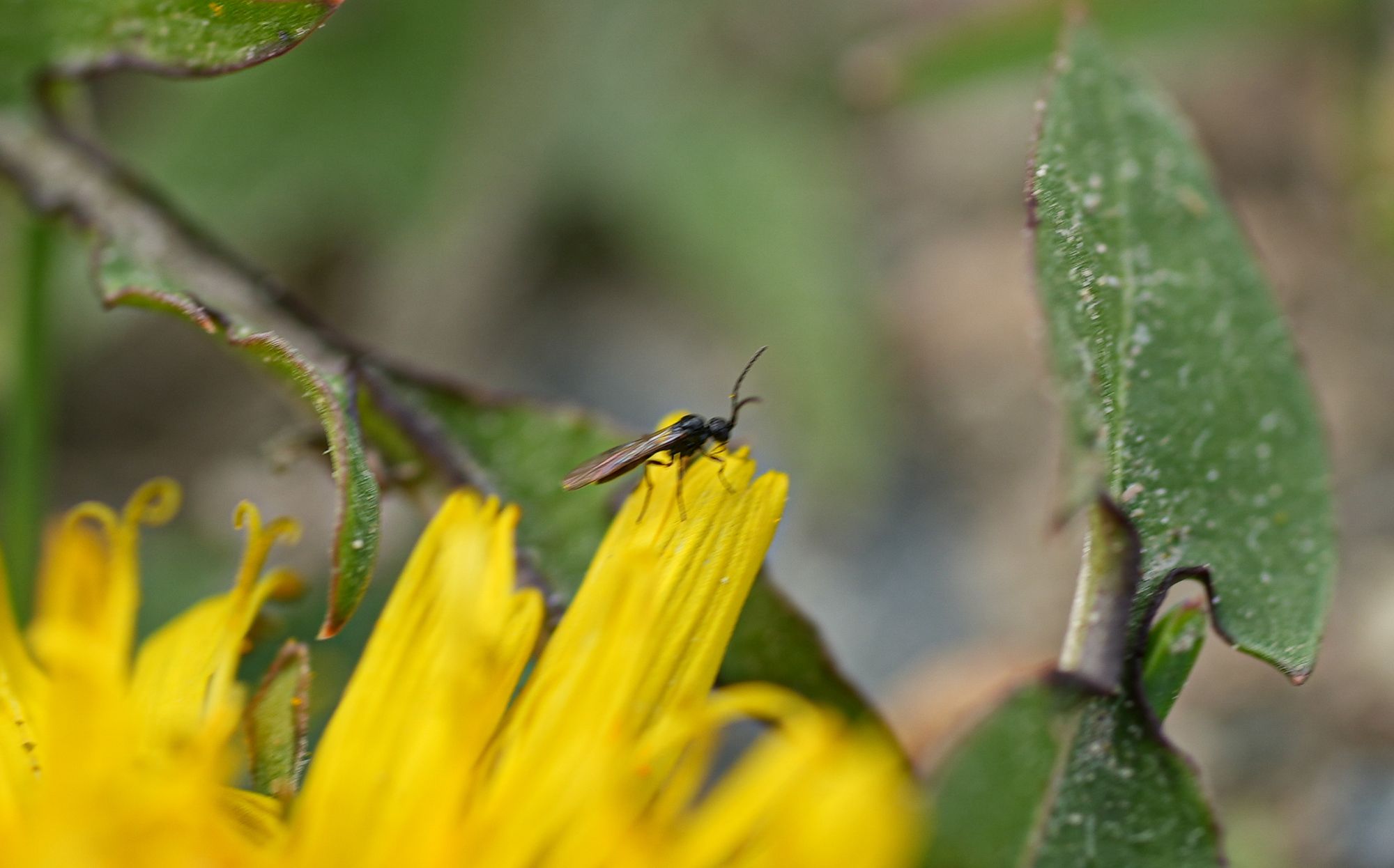
In terms of still-active flowers, it seems like dandelions are the only show in town, so it makes sense that they would be so popular with insects.

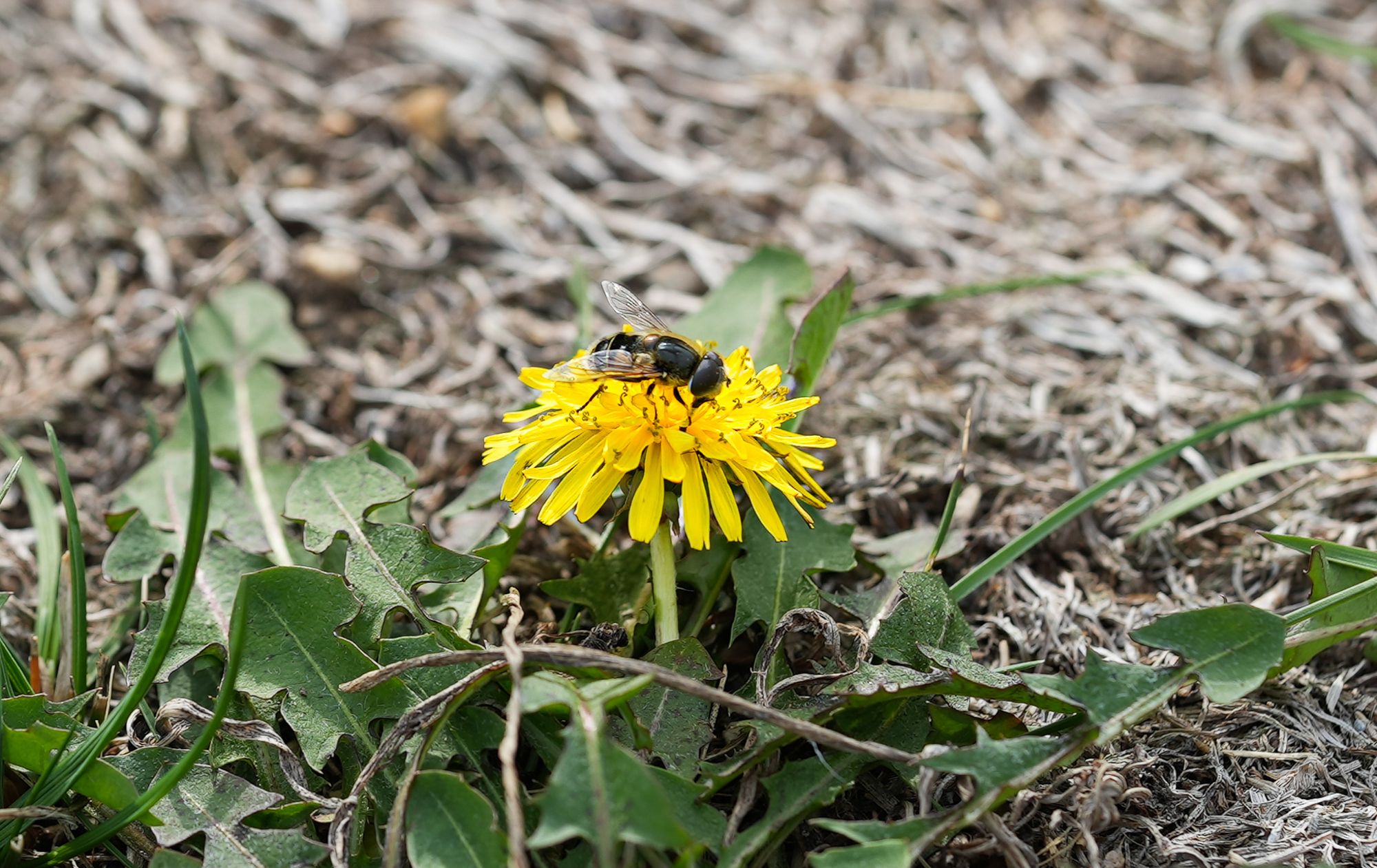
More native flies. Photos by David Lukas
What was perhaps most surprising were how many types of insects I spotted in just a few minutes. I photographed as many kinds as I could, but many of them were skittish and flew off so I couldn't photograph them all.
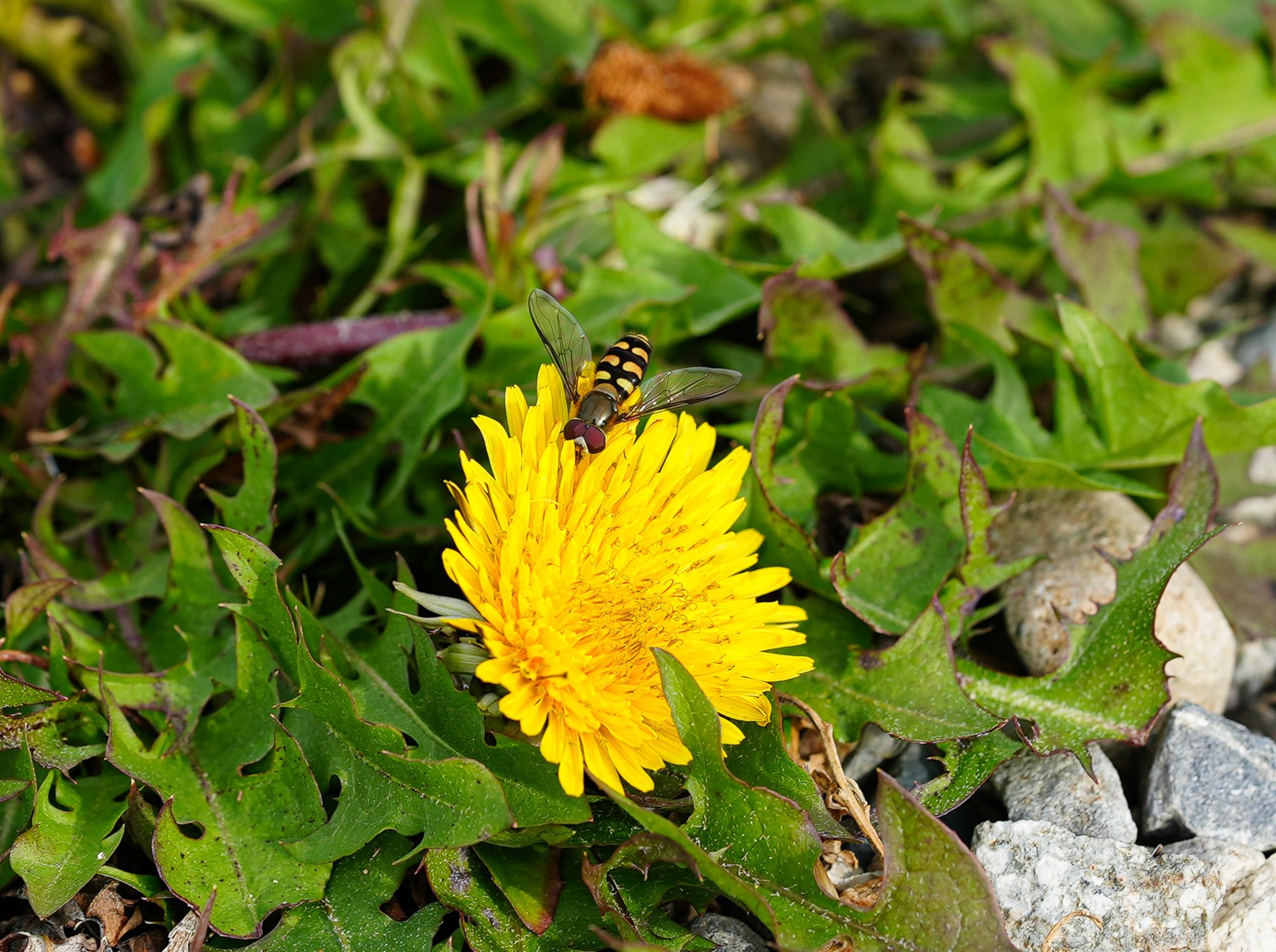
I know that many people can't stand dandelions and find some way to eradicate them, but every one of these insects is a node in another web of life, and it seems like dandelions help them survive at this difficult time of year. Maybe these flowers aren't so bad after all!
